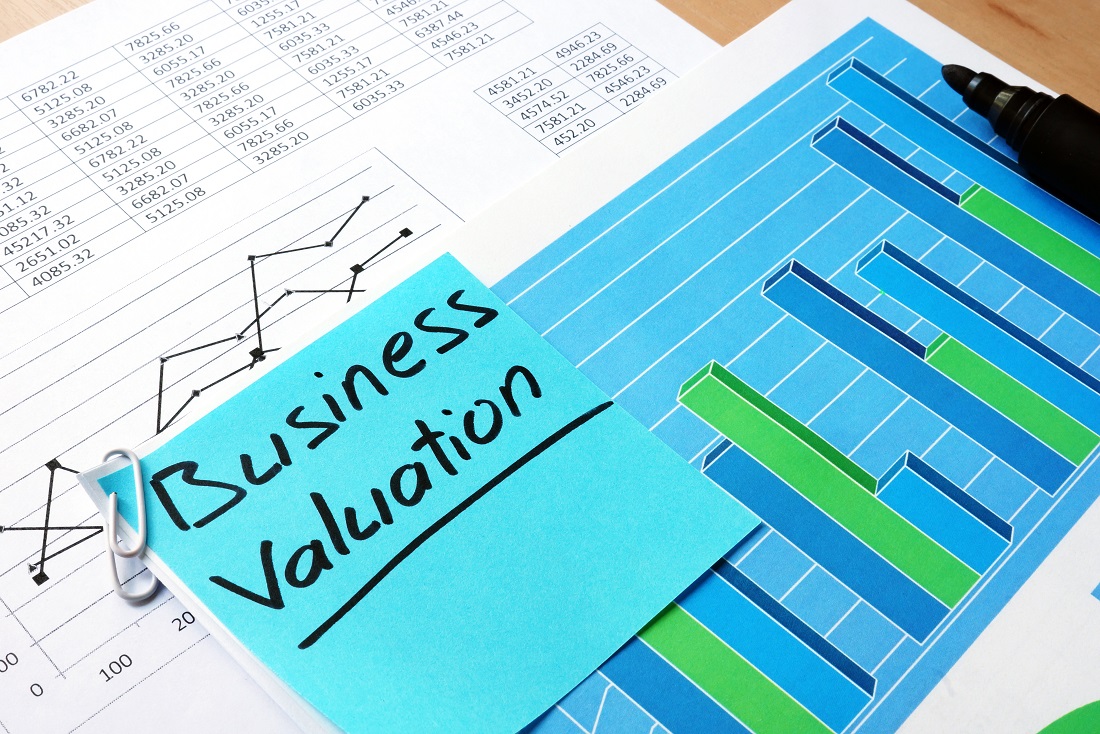Whether it is a sale of an owner-managed business to a listed corporate, or a growth capital investment into an EIS qualifying enterprise, business valuations are fundamental to corporate finance transactions and are a critical aid to the decision-making process for entrepreneurs. A thorough understanding of how businesses are valued, and what drives value, will help business owners maximise the valuation of their company.
In practice, the business valuation process requires technical knowledge, skill and detailed financial analysis, but value can and does mean different things to different people and is subjective. Valuation is therefore part-art, part-science and involves judgement and experience. There are accepted valuation principles and guidelines, but two valuers given the same information may well come up with different answers.
Perspective on valuation will also change depending on your role and viewpoint – buyer or seller, investee or investor, your appetite for risk versus return. It is also important not to confuse valuation and price. The value that a buyer and a seller may place on a business may differ, but if there is overlap then a price that the business can be bought and sold for can usually be agreed. In the context of a transaction, a theoretical valuation should be carried out before the event to aid decision making but ultimately, it is the market that will decide value.
Business valuation methods
Several different techniques exist but the three most common methods are:
- An income-based approach or discounted cash flow (‘DCF’)
- A market-based approach using multiples from comparable transactions and listed businesses
- An asset-based approach
An income based or DCF approach forecasts the free cash flow that the business generates plus a terminal value, discounted at an appropriate discount rate (usually the weighted average cost of capital or ‘WACC’) to arrive at a net present valuation for the business. The future free cash flows can be assessed both pre-and-post-synergies, although a buyer should seek to buy the business closer to its pre-synergy value as they take on the risk and often the cost of generating any synergies post-deal. However, DCF business valuations are only possible with sensible three-to-five-year forecasts and the technique is highly subjective and sensitive to the assumptions used.
>See also: 21 tips for cash flow management
In practice, it is far more common for a market-based or multiple approach to be used as they are easy to interpret. Industry specific multiples may be applicable but typically enterprise value (“EV”) multiples such as EV/revenue, EV/EBITDA and EV/EBIT are common. Revenue multiples are used for many early stage, pre-profit or tech businesses such as software-as-a-service providers but for most profitable trading businesses, the most commonly used technique is EV/EBITDA. This technique applies a multiple to the (adjusted) earnings before interest, tax, depreciation and amortisation of the business being valued. As this measure of earnings is taken from higher up the P&L, it is considered “cleaner” than EV/EBIT or price earnings ratios as it eliminates the impact of different financing structures, tax rates and depreciation and amortisation accounting policies present between businesses.
EBITDA will typically be adjusted for items such as one-off exceptional income or expenses, market rate remuneration for director-shareholders, discontinued operations, profit or loss on asset sales and shareholder or non-business-related expenditure. More recently we are also seeing adjustments for the impact of Covid and, for some businesses, the additional costs relating to Brexit.
Multiples can be obtained from sources including historic share transactions, funding rounds, approaches or offers for the company. However, the main sources are the multiples of comparable transactions of similar businesses and comparable listed companies, discounted for differences including size, risk profile, reliance on key individuals and reduced marketability and liquidity. In practice, finding a listed company or a transaction that is truly comparable can be difficult and deciding the appropriate discount or adjustment is where valuation experience comes to the fore.
Enterprise valuation versus equity valuation
The difference between enterprise value (‘EV’) and equity value and the bridge between the two is often misunderstood by business leaders that have not been through a corporate finance transaction. Enterprise value consists of a business’ long-term debt and equity financing, or the value of the business to all providers of capital. The valuation approaches discussed above generally result in an enterprise valuation which is then bridged to equity value. Adjustments will be made using the latest balance sheet to arrive at the price to be paid for the market value of the equity (the equity value).
Typically, debt and other debt-like instruments are deducted from EV to arrive at equity value whilst excess cash and surplus assets are added. Other items considered as debt-like items include underfunded pensions, corporation tax liabilities and preference shares. Market convention often assumes that any non-operating or surplus cash would be used to repay outstanding debt and is therefore included in ‘net debt’ when bridging from enterprise value to equity value. It is also common to assume that the business will have a “normalised” level of working capital at completion and therefore an adjustment is required when bridging to equity value to the extent that there is a surplus or a deficit in working capital.
The definitions of debt, debt-like items, cash, cash-like items, net working capital and the working capital target are subject to intense negotiation as part of the deal process and impact equity value significantly because net-cash/net-debt and the difference between the working capital target and actual working capital at completion will have a £ for £ impact on equity value. Whilst some items are straight forward in their classification, others, such as deferred income or accrued management bonuses, are controversial and will be subject to negotiation. Often the purchase price is described as being on a ‘debt-free and cash-free basis’ while other price adjustments are set out in the SPA (Sale & Purchase Agreement) through completion accounts and true up mechanisms. In practice, this means sellers should pay down debt and manage working capital efficiently in the run up to a sale, whilst buyers will want to ensure that the business is left with sufficient working capital to fund operations once acquired.
>See also: Financing face-off: debt vs. equity
Value drivers
There are numerous ways to increase the value of your business over time, but it starts with an understanding of the value drivers that are specific to your business and industry. Many common value drivers exist including growing revenues, earnings and cash-flows, quality of revenue (repeat and recurring) and quality of earnings, a strong and incentivised management team and employees, competitive advantage and a defensible position in the market, scalability and synergies available. Other factors influencing value are dictated by the M&A process itself, or timing such as competitive tension between buyers, the status of the economy or activity levels in the M&A market.
Valuation is key in the context of a transaction and a pre-deal assessment of valuation is imperative. An advisor can provide a valuation based on best practice techniques but also their experience and knowledge of valuation in the context of the corporate finance and M&A markets.
Should you be contemplating a sale, a good corporate finance adviser can also help prepare your business for sale to maximise value and also assist in identifying buyers who would most likely pay a strategic premium. From a buyer’s perspective, the valuation process should be under constant review throughout an acquisition and be prepared to walk away if the price is too high.
Ian Dawson is corporate finance Director at Seneca Partners, a specialist SME investment business which has over £100 million of tax-advantaged investments under management.
This is the final article in our Build Back Better series. Previous pieces in the series have looked at business acquisition, selling a business, stock finance and more.
Read more
Critical importance of private company valuations in the post-Covid world






